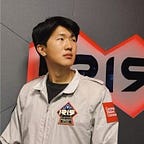Why Are So Many People Getting Strange Dreams in Quarantine?
Stress, Isolation, and Metaphors in the Subconscious Mind.
--
I am walking down Broadway in the dead of night. Not a soul in sight — empty parked cars reflect the neon screens' light illuminating the street. As I turn my head to look around, the only face I see is that of Conan O’Brien, affixed to the side of the building — a poster promoting his late-night show. I hear rustling behind me. I turn.
It’s Conan himself, walking toward me. He wears a macabre grin, his right hand hidden behind his back. I can feel him laughing at me, but his mouth does not move. I turn to run, trip, dive toward the ground head first — a sudden feeling of weightlessness — then I awake.
As we near the end of 2020, I must reflect on the peculiar way my dreams have become a stranger to me over the past year. A land of childhood memories, interspersed with sleep paralysis demons, has now turned fully surrealist. It’s not just me — everyone remembers more dreams during the pandemic, and they can be both vivid and perplexing.
One theory raised to explain this phenomenon is that our long-term anxieties come out when we sleep. Whether related to concerns about job security, the health of friends and family, the economy, the end of a long and grueling election cycle in the US, or the nation's general mood, this year has no shortage of such stressors. Stress was poled as the UK’s top emotion, especially during the first few weeks of lockdown. A general air of malaise permeates the outdoors now, where every trip outside of one’s safe bubble is a danger, each delivery, conversation, letter a potential vector for transmission.
Another, simpler answer is that we are sleeping later into the morning and thus are more likely to dream longer. The REM (rapid eye movement) phase of sleep, where most dreams occur, increases into the early morning. Combined with the fact that we wake up around then, bizarre dreams will likely be remembered in vivid detail. This may be helped by how fragmented sleep has become for many Americans; a study on 2,000 adults by OnePoll reported that:
“More than two-thirds (68%) said their sleep habits have become increasingly inconsistent, while 63% think their sleep schedules might be permanently disrupted.
44% of the respondents are staying up later at night because they don’t have to commute to work, and almost half get out of bed only 10 minutes before their remote workday starts.
Among those who work from their bed, nearly 70% have a hard time focusing.
Respondents working from home average two naps a week during their workdays.” — from Safety & Health Magazine.
With the increase in binge-watching Netflix shows, late-night scrolling through social media feeds, and the lack of real deadlines and structure for many, our dreams are ripe for the atypical.
An online survey by a Harvard professor revealed that our dreams contain many different metaphors for COVID. Whether as swarms of locusts and roaches, giant tornados and earthquakes, or Trump “telling you that the tsunami is fake news,” our mind generates fantastical disasters to give a face to the killer whose murders are hidden from the eye of the public, relegated to numbers on a graph. Dreams help our mind directly visualize the issues we are facing and the invisible trauma we are trying to cope with within an exaggerated form. Our subconscious dreams up scenarios to practice against, and other times it is the wandering thoughts of the waking mind that bleed into our nightmares.
“People who are sheltering at home alone will dream that they’ve been locked up in prison, or one woman was sent to Mars by herself to establish the first one-person Mars colony.”
My personal speculation on why my own dreams have been strange revolves around masks. I am fortunate enough to live in a city where those without masks are the exception, not the norm. However, this has resulted in an interesting side effect; I do not see any fresh faces during my day-to-day interactions. My nightly hallucinations in the past regularly included scenes and thoughts from the events of the day; classrooms, office blocks, parks, and stores with people wearing faces I associate with those locations.
Mask-wearing has changed social interaction drastically. Compared to office life or on-campus education, where I might have dozens of encounters and see hundreds of new faces each day, the pandemic has given my subconscious only half-faces to show in my dreams, with the nose and mouth obscured behind a cloth. I can see how my dreams have adapted, plastering half-forgotten faces from my past onto new bodies as stand-ins or concocting bizarre new plot lines. Pandemic dreams feel much like the neglected last seasons of a dying T.V. series, where the writers have run out of source material and are resorting to cranking up the drama in ever-increasing ludicrousness in a last-ditch effort to stay relevant.
I do feel a slight tinge of pity for my dreaming subconscious; When even the writers of late-night television couldn’t spin up scenarios stranger than the events of 2020, how could my dreams compete?
